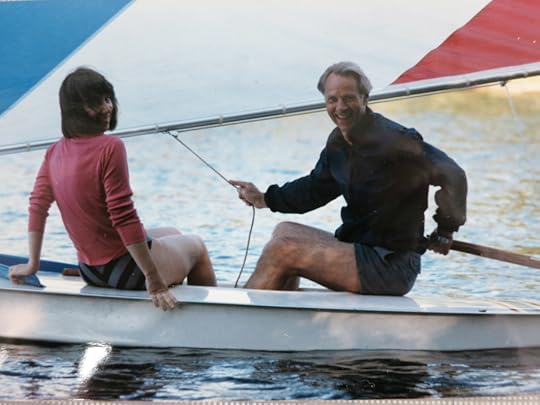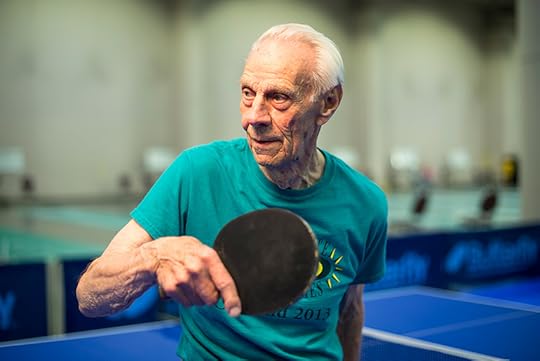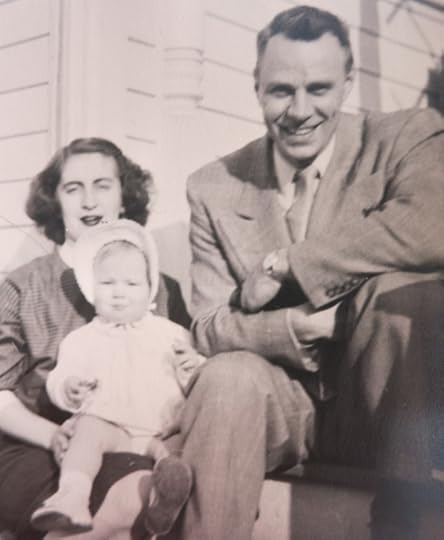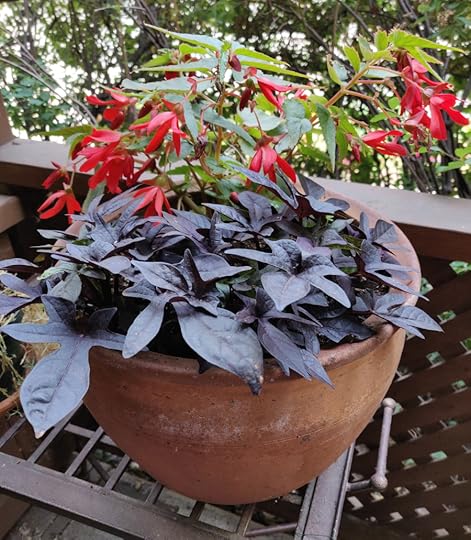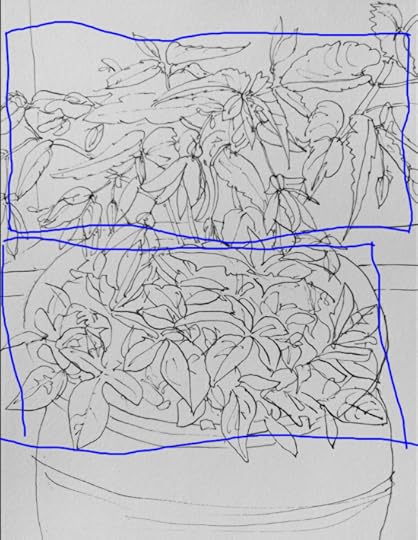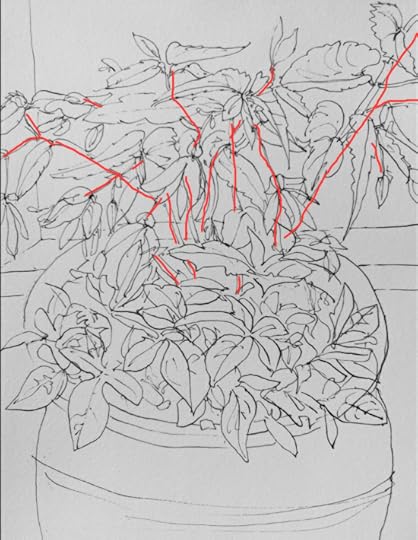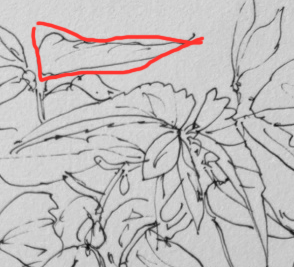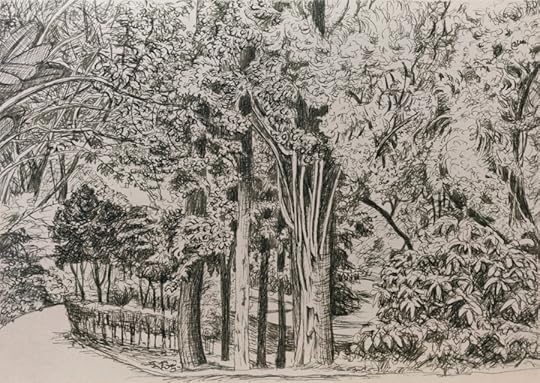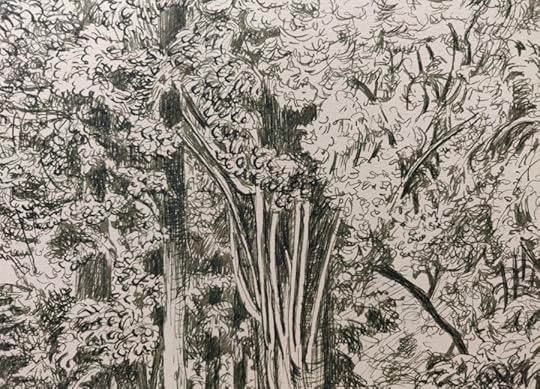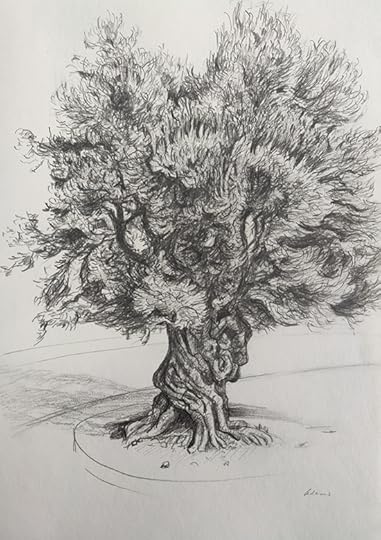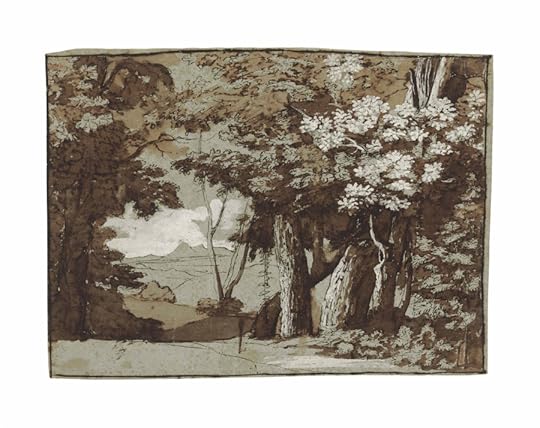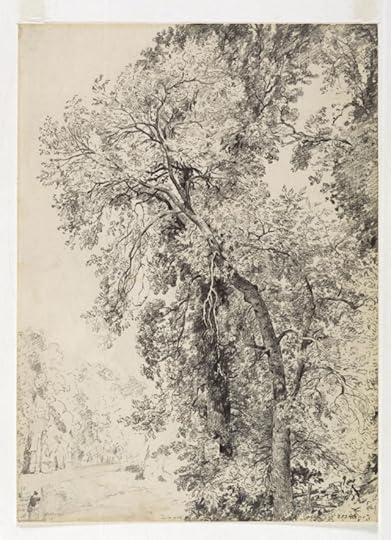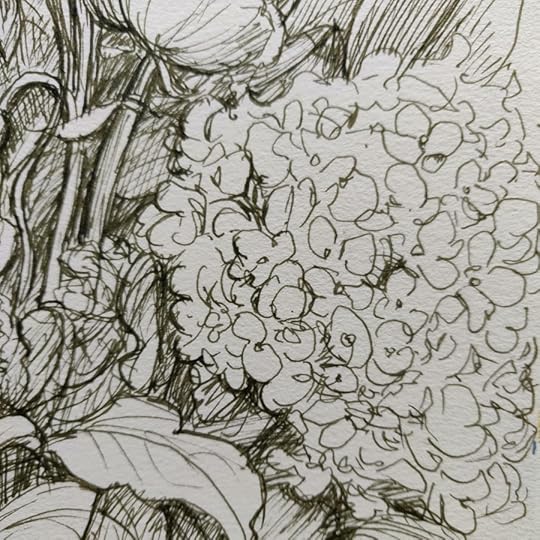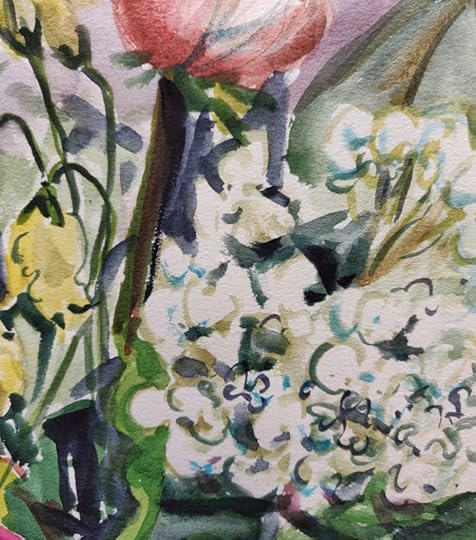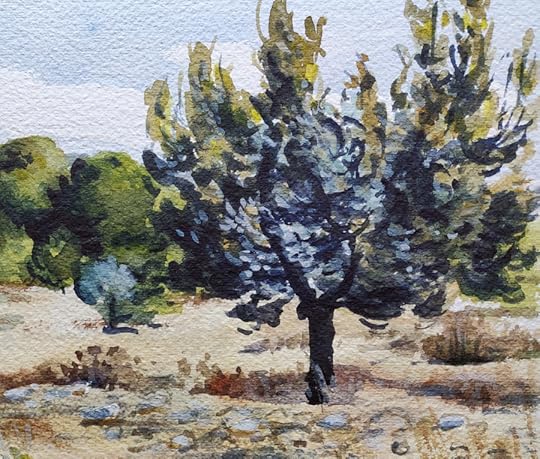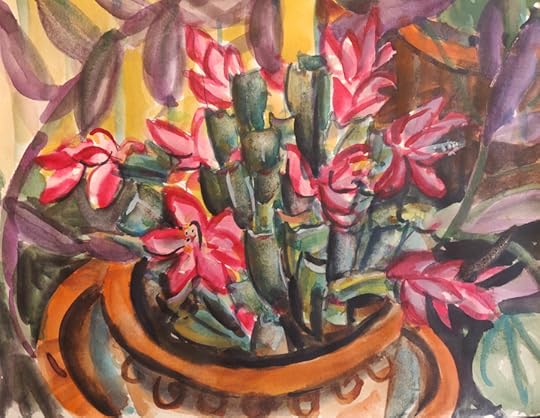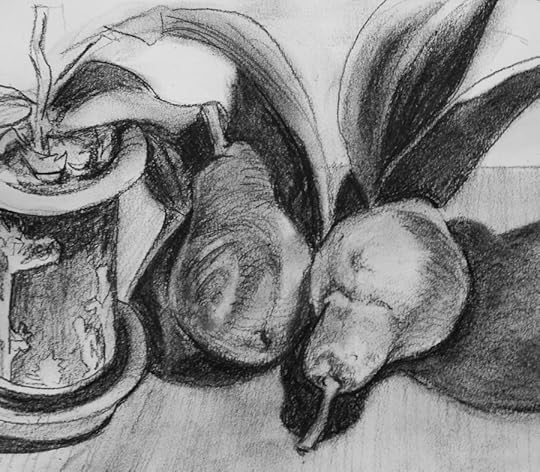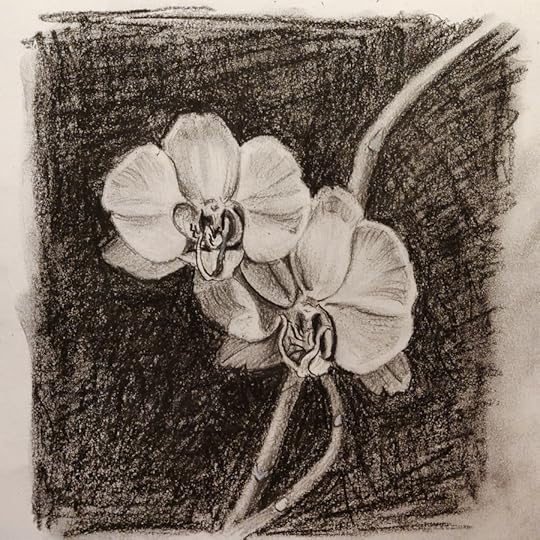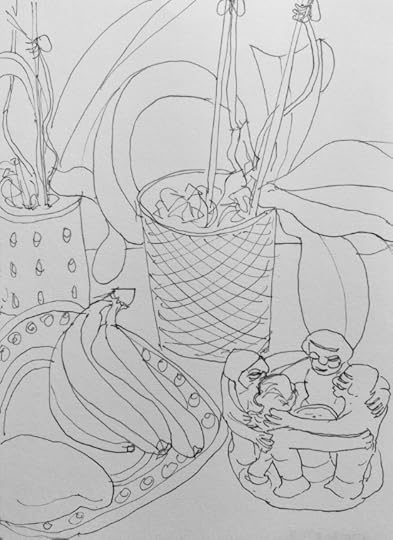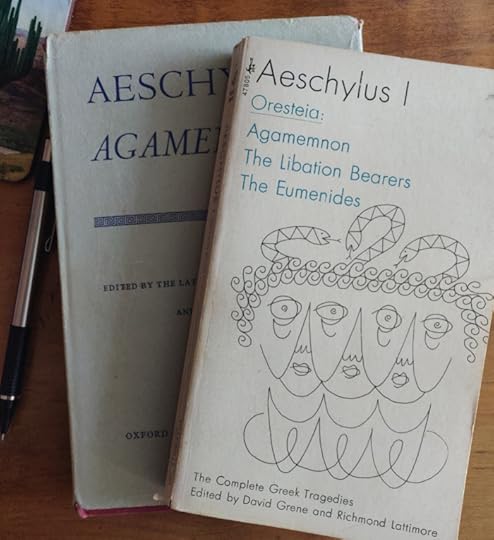Elizabeth Adams's Blog, page 16
June 20, 2021
Happy Father's Day
I wanted to write something today in honor of my father, who is 96 1/2 and still going strong. Not a day goes by that I don't think how fortunate I have been to have him in my life, for so much of my life, and for his remarkable vigor. His longevity and health owe a lot to the genes he inherited, and to good luck, but even more so, I think, to the care he's taken to stay in good physical shape his whole life. He survived WWII, as a tank driver in Patton's army in Europe, and came home to marry and become a father and a businessman. When I was little, he still smoked, but he stopped and immediately became consumed with physical fitness - I think he was one of the first people in our small town to become a dedicated runner, at a time when you were laughed at for doing such a thing. He''s a natural athlete, and eventually took up table tennis as his particular sport, which culminated in several appearances in the National Senior Games where he won the national title in his age group, after two knee replacements. He had one hip replaced as well. He still played competitively until a couple of years ago; still drives; still lives independently with his partner of the past twelve years who is, herself, remarkable for her age.
(c) Aaron Levinsky, National Senior Games, 2015
I am an only child, and wasn't particularly athletic, except for being a good swimmer, and later, someone who really enjoyed small boat sailing (which he taught me), downhill skiing, and biking. I got my musical ability and love of it from my father, and it's something we've shared from the earliest days when he taught me to sing harmony, read music, and begin the piano when I was so young I can barely remember. He's an excellent woodworker/fine carpenter, who not only built furniture but our own house, and has always loved to do creative projects and to fix things -- in recent years that's turned into a hobby of fixing clocks, the more complicated the better.
Regardless of the challenge I was facing, from academic or artistic endeavors, to finding my way at a big university, to starting a business, my father always encouraged me to persevere, to be fair in all my dealings, concentrate on doing my own work tot he best of my ability rather than worrying about the competition, and to learn from my mistakes. If I had agreed to do something, or take a course, or learn something new, the rule was that I couldn't stop in the middle, but had to see it through for the agreed-upon duration. His other mantra was "a thing worth doing at all is worth doing well." I took that to heart as well. In combination with the influence of the strong women of my family, he also gave me the confidence to believe I could do whatever I wanted as a woman. I got my outgoing nature and love of humor from him, too. And in our nuclear family we had a rule: never let the sun go down on your anger.
My dad and I don't agree about everything, of course, but we've kept to that rule, we've always been close, and there's an unshakable bond of love and loyalty between us. It's been hard not to see each other in person during these months of the pandemic and a closed border, but we've kept in touch by frequent phone calls and the occasional zoom. Today, at last, I received my second vaccination, and hope to be able to go down to see him in the fairly near future, so that's something to celebrate in addition to Father's Day. Dad, je t'embrasse!
June 13, 2021
Drawing 101: Where to Start your Drawing
Several people have asked, "Could you talk about how you begin a drawing? How do we know where to start?" It's a very good question. So often sketchers gets frustrated because suddenly here they are on the left side of the page and there's no more room, or the drawing looks misshapen, and they can't figure out why. We all have those problems from time to time. But what I want to say up front is that "Most errors that we think are in drawing actually begin with errors in SEEING."
So, before we ever set our pencil to paper, we need to stop and look at our subject with an analytical mind. Can we imagine some simple geometrical shapes into which it fits? And then can we subdivide those shapes to get a better idea of the placement of different elements that make up the subject?
Here's a pot with two different kind of plants in it that I decided to draw from life last night:
and here's the drawing I made from it, from a slightly lower angle than the photograph:
It seems like a fairly complicated subject. I needed to figure out how to fit it onto my rectangular sketchbook page. So the first thing is to look a little more closely. What do we see in the subject? Well, we've got two fairly equal areas of foliage, and a large pot below them. Here's how that translated to the page:
We're not all that interested in the pot, so we make a decision to crop out most of it - and I've also made the neck of it smaller and the pot a bit narrower. But we can see that these three elements together: two rectangle of foliage, and part of a pot beneath -- will make our drawing taller than it is wide, so we decide to orient our sketchbook page as a "portrait" view rather than "landscape" (tall rather than wide). This way most of the subject ought to fit -- if we plan it correctly.
So now we want to make a few marks on our page that give us some guidelines for placement. I'm telling you exactly what I did when I began this drawing, because I had to go through these steps of thinking and marking my page. Otherwise I'm quite sure I would have had trouble.
I always look for shapes that are going to help me create a structure upon which to "build" the drawing. So here, I decided to draw a few curves that indicate the open oval of the rim of the pot. Before I did that, though, I needed to figure out approximately what was the center of the composition, and place my oval accordingly on the page. The blue rectangles that I visualized when studying the real-life subject are the key. Basically, I saw that I had two roughly equal lengthwise rectangular sections of foliage, and would need to leave an area about half as high at the bottom, for the pot. The oval of the pot would fit within the edges, because it's narrower than the spread of the foliage.
It didn't bother me that I wouldn't be able to get all the begonia foliage and blossoms into the drawing, because I like my drawings to be cropped by the edge of the page. Then I drew the two curves for the sides of the pot.
Obviously, the more practice you have, the easier it becomes to judge relative shapes and sizes of things. Is the plant taller than it is wide? Or does it take up a shape that's a narrower, shorter rectangle? You can use the trick of holding your pencil at arm's length to make relative measurements of your subject. Squint at it with one eye, and line up the top with the top of the begonia foliage. Mark the bottom of the dark sweet potato foliage on the pencil with your thumb. Now, without moving your thumb, rotate the pencil so that it's horizontal. Is the width of the pot greater or less than the height of the foliage? If they're equal, that would indicate a square format for those elements. And so forth. Learning to judge the relative shapes and sizes of what you see is one of the most important skills you need in drawing, so it's worth practicing it, and checking yourself.
Plants are great to practice on, because they're a lot more interesting than cups and saucers and bowls and bottles, and a lot more forgiving than a face or a human or animal figure. Combining them with the "harder" elements of still lives - various ceramic or glass objects, for instance - gives you practice in seeing and drawing ellipses in perspective and other forms too. And you know what? Those objects don't have to be drawn perfectly. What you're aiming for is a lively drawing, not academic perfection, and plants help with that sense of life. If you look at my drawing and the photograph you'll see it's not 100% accurate, and that doesn't matter.
Similarly, sketching a landscape can give you practice seeing and drawing shapes and their relative sizes. But try not to make yourself crazy by drawing complicated city streets, or making portraits of your friends right off the bat. Pets are notoriously hard to draw -- start when they're sleeping! So, begin somewhere manageable. There's a reason for all those still lives of fruits and bowls, or pictures of simple objects like chairs and shoes and books. I like this artist's Instagram feed because he does precisely that: he draws simple scenes from his daily life every single day. But he's a very fine printmaker and painter as well. Drawing is his foundation.
Once I had the pot indicated on the page, I began with the sweet potato vine foliage, from left to right -- but it doesn't really matter. I knew it was going to essentially "fill" the oval of the pot. What you need to do is take a minute to study the size of a representative leaf, and how the leaves are formed. Once you've placed that leaf in your drawing, all the other bits of foliage will be sized and placed relative to it.
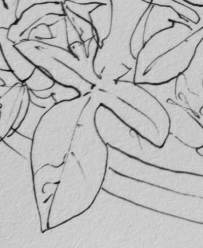 Every plant -- every tree, vine, bush or flower -- has a typical growth habit, and you need to know what it is before you start putting lines down. I didn't know how these grew. I saw that the leaves have five parts: the large central leaf which is an oval, wider in the center, tapering to a point (most of the time), with deeply rounded divisions between it and the two horizontal side leaves. Then there are two little leaves at the back. Look first, study, get the shape in your head intellectually -- you might describe it in words like that to yourself -- then draw, and you'll suffer less! The tricky thing is that all the leaves which lie in this fairly flat plane are at different angles. But you will be able to discern quite a bit of repetition and see that most of them are simply rotated from your "model" original.
Every plant -- every tree, vine, bush or flower -- has a typical growth habit, and you need to know what it is before you start putting lines down. I didn't know how these grew. I saw that the leaves have five parts: the large central leaf which is an oval, wider in the center, tapering to a point (most of the time), with deeply rounded divisions between it and the two horizontal side leaves. Then there are two little leaves at the back. Look first, study, get the shape in your head intellectually -- you might describe it in words like that to yourself -- then draw, and you'll suffer less! The tricky thing is that all the leaves which lie in this fairly flat plane are at different angles. But you will be able to discern quite a bit of repetition and see that most of them are simply rotated from your "model" original.
The begonia presented a different problem - it's not radiating out on a flat plane, but growing upright. Anytime we've got plants with stems -- that includes trees! -- we need to indicate the structure first. So what I do is to mark those stems before we draw a single leaf:
And then, as we draw, we "hang" all the leaves and flowers off that structure, just as nature does.
I like the analogy of a string of pearls lying on a table. If we try to draw each pearl individually, we'll probably lose the shape of the whole strand. But if we indicate the string first, even though we can't see it, and THEN draw the pearls, we'll have a much better result.
The begonia leaves, too, have a characteristic shape, and once I had figured that out, I could start adding them to the drawing.
The blossoms came last.
I hope this was helpful. It's just an example, but this basic method of looking, analyzing, and reducing to basic shapes is what I always use. Happy drawing!
May 28, 2021
Thinking of Palestine
That's the title of this painting, done back in 2014. Like many of my still lives, it contains objects that are self-referential: this is my father-in-law's family's brass coffee pot, which we now have; the window with blue sky above eye level represents the Palestinian sense of enclosure and imprisonment; and the small fossil which I found in central New York, where I grew up, represents the remnant of Christians still living in Jerusalem.
Neither of my in-laws were Palestinian -- she was Armenian, he was Syrian, and both were Christian -- but they both lived in, knew, and described vividly the great ancient cities of the Middle East when they were inhabited by people of all the Abrahamic faiths, for the most part co-existing peacefully and respectfully throughout the centuries, although of course there were times of genocide and evictions, especially under Ottoman rule. This multi-faith existence was true in Damascus, Aleppo, Istanbul, Beirut, Alexandria, Jerusalem. And it is rapidly becoming true no longer.
I've been involved for two decades in trying to promote dialogue between the faiths, educating people about the history, and working for peace. The situation between Israel and the Palestinians is so much worse today than back in 2000, at the time of the second intifada. I won't go into the reasons here. My heart aches for the lost lives on every side, but especially for the innocent Palestinian children who have been killed before their lives have even had a chance to unfold, not that these nascent lives would ever have been easy or filled with opportunity.
In thinking about the events of the past few weeks, I keep asking myself what I can do. I will give to local charities that send money directly to families; that is certain. But I know that I have at times been guilty of letting my own anger, frustration, and grief make dialogue harder with those who disagree with me, or who understand the situation differently. Because I know a great deal about it, I'm sure I've sometimes come on too strong and added to division, rather than making it clear that what I care about most is peace.
However, the point I want to make today was written very well by the poet Leila Chatti, who said:
One cannot advocate for racial equality, LGBT & women's rights,
condemn corrupt and abusive regimes and other injustices
yet choose to ignore the Palestinians' oppression.
It does not add up.
You cannot pick and choose whose human rights matter more.
I'm glad to see this point finally being made by courageous politicians in the U.S. and by both Jewish and Arab activists all over the world, particularly the young. That gives me hope. All of us need to join together to try to find a solution, and to "be peace" rather than fighting the same battle in our living rooms and communities. We need to find ways to talk to each other, to tell each other our stories in the same ways that we have begun to tell stories about how we were abused as women, or as Black people, or LGBTQ+ people, or Asian Americans, as Jewish people or Muslims, or any other group that has endured marginalization, oppression, prejudice, and violence. We have to have the courage to be vulnerable, and open up our first-person narratives, because that is what changes hearts and opens formerly closed-minds to the lived reality of others.
And I would say to those who have closed their eyes to this particular oppression because they feel it's intractable, or too difficult to understand -- please ask some questions, please educate yourself by looking at multiple sources. If you don't think that the United States plays a major role in this oppression, and has used some of the same tactics in its own foreign wars, please educate yourself. If you don't remember what happened in South Africa, then perhaps you feel that peace is not possible. But I do not believe that, and I will never believe it.
Some resources to start with:
Another person who refuses to give up on peace is former US president Jimmy Carter. His book The Blood of Abraham: Insights into the Middle East, revised in 2007, "explains his understanding of the Middle East and seeks to provide an enlightening and reconciling vision for greater peace in the region."
Here is a book list about the history of the conflict from a Palestinian perspective, and there is a lot of other information on this website, Middle East Eye, including videos by young people made during the last month.
My friend Rabbi Rachel Barenblat has written movingly about her own feelings about the conflict over the years and the difficulties it has presented for her in her family and in her congregations; I'm happy to commend her posts to you.
Finally, I was moved to tears by this photo essay, They Were Only Children, in the New York Times about the children, Palestinian and Israeli, who have been killed in the most current conflict. If anything is a desperate call to us to do better, surely this is.
May 15, 2021
On Drawing Trees
E. Adams, In the National Gardens, Athens. Fountain pen with grey ink on beige paper, 14" x 10", May 2021.
On Friday, feeling grief and anger over the situation in Palestine, I turned to drawing. Wanting to do something consuming, even obsessive, that would occupy my mind for several hours, I decided to try a drawing in ink of this overgrown corner of a path in the National Gardens in Athens. It was a good choice, and a challenge -- probably the most complex scene of trees and vegetation that I've tried to do.
I started in the middle, with the largest tree, establishing the scale with that and then moving outward, first on the lower right, then upper right, then the left-hand side of the page with the far left, opposite side of the path, coming last.
There's no pencil underdrawing, and I decided to limit myself to just the ink on the paper -- no washes, and no brighter highlights in gouache or white pencil. That made the task harder, because I was using grey ink on toned paper, which already meant that I had a shorter tonal scale to work with than with black ink on white paper, for instance. The overlapping and varied strokes of the pen would have to do all the work.
As I moved into the foliage, I searched for a "shorthand" way of indicating the different types of leaves and growth patterns. Nobody wants to draw individual leaves, and it doesn't lead to a lively line at all; besides, you quickly go crazy. The detail below shows it better:
I tried to look at the growth patterns -- the leaves on the left, for instance, were stiffer and clumpier than those of the delicate, wispy tree on the right. What seemed to work for me was not just varying the shapes I was drawing, but also the pressure of the pen -- the strokes on the right are delicate, light, and fast, while the ones on the right are more emphatic and distinct.
Looking back through some of my work from the past few years, I can see that trees figure pretty heavily, but usually as part of an overall landscape. I've been drawn to olive trees in particular. One of the only "tree portraits" I've done was this ancient olive tree from Agrigento, Italy, back in 2019:
E. Adams, Olive tree at Agrigento, pencil on paper, 2019.
I want to do more of these complex scenes, now that I feel like I've cracked the code a little bit more -- as with some of the urban rooftop scenes in recent years, a subject that once was completely daunting is becoming a little less so. The drawing at the top of this post took about three hours, and I'm happy with what I learned and how it came out.
---
Today, I took some time to look at some old master drawings of trees -- these artists were studying the landscape for their oil paintings, but also because they clearly found trees as fascinating, beautiful, and individual as I do. Here are a few that I especially liked.
Claude Lorrain (1600-1682). Pen and ink with washes and white gouache on toned paper.
Lorrain's drawing is a good example of what can be achieved if you work on a medium-toned background, and add washes and some highlights. I'd forgotten what a consummate draftsman Lorrain was; I may do another post just about his work, some of which is so sketchy and loose it looks modern.
John Constable (1776-1837). Study of ash trees, pencil on paper.
Constable -- my God, what a draftsman of trees! These are both in pencil - the delicate ash trees above look almost like he drew individual leaves, but he really just sketched the shapes they formed together, which along with the growth-habit of the trunk and branches gives the distinctive character of the species, and this individual tree.
John Constable, Fir Trees at Hampstead, pencil on paper.
Constable again. So impressive -- he's deftly captured a totally different character of tree here, and gives the exact feeling of sitting back on the ground, looking up at these magnificent firs which recede behind one another.

Rembrandt von Rijn (1606-1669). Landscape etching.
Finally, one from Rembrandt -- I love this because it's deliberately left unfinished, and we can see his fast, scribbling line. Look at that barely-indicated tree, over on the left! Picasso loved Rembrandt and you can see why. His facility is unnerving, and just makes me smile with delight when I see the way he "builds" the trees with just that line before starting to add any shading or detail, and then starts to go in: "yes, let's work on the side of that trunk to show its gnarliness, let's show the little leaves on the ground and the way the bank is uneven, these branches I'll leave white against the dark foliage, but those others need to be dark against the light shining through"... I could feel him thinking some of the same thoughts and making some of the same decisions I did in my own drawing, and all those years and the distance between anonymity and fame collapse, and we're just two artists concentrated on our work, looking intently at trees.
May 8, 2021
Bouquets
Spring has come to Montreal very slowly this year, which I like -- it gives us time to adjust from our Canadian deep freeze, and to really enjoy the incremental changes each day brings. While friends further south were posting pictures of cherry blossoms and daffodils, we were still looking at snow...so it was lovely to have a florist call us and say there was a delivery. A friend had sent us flowers in honor of his OWN birthday -- what an unexpected and beautiful gesture! This was the second of three bouquets we've enjoyed this spring, and it's the one that I managed to sit down and draw, and then paint.
The drawing started out as pure line, but I felt that the shapes were just too complicated to read that way, so I added some shading while trying to keep it all fairly lively.
How different it feels in color! I like the drawing more, but I think most people would probably prefer the watercolor.
In any case, I appreciated the hours I spent looking at these flowers - a challenge for the artist, and a respite from the sadness of the world as so many people continue to suffer from the virus and the inequalities of access to care, medication, and vaccines. Please give a donation if you can: what would you have gladly paid for your own vaccination?
April 22, 2021
A Greek Landscape for Earth Day
On this Earth Day, I could have written about Iceland, where new earth is being born this very minute. But instead, here is a painting of an elemental landscape in Greece, one that's probably existed in various forms for as long as human beings have gathered fruit from trees and fish from the sea: stony soil, an olive tree, the sea just beyond. If we listen, maybe we can hear the tinkle of bells on the collars of sheep and goats, herded into a hollow just beyond the picture frame... In Mexico, perhaps the olive would be replaced by some agaves. These are the sorts of natural and agricultural landscapes of basic sustainability that exist all over the world, which are threatened by climate change, and which we must protect.
As I painted and thought about these things, I enjoyed knowing that some of the pigments I was using came directly from the earth too, and that water -- the most basic substance of all -- was the medium in which they were dissolved. But the connections go far deeper than the food we eat, or the elements we use in our daily lives.
For instance, it's iron that gives its red color to the earth that was at my feet in this picture, and there's an iron molecule in the center of each hemoglobin molecule in our blood, which is why it appears red.
Most of the time, we don't even think about these interconnections. But actually we are creatures of the earth, just as much as the old olive tree with its roots in the rocks: it's true on the macro level of our interdependency for life itself, and it's true on the micro level of the smallest cells in our bodies.
When we spend our lives in paved-over cities of concrete and steel, surrounded by digital screens, it's a lot harder to understand who we are, and where we come from, than it is for the shepherd who herds his sheep across this hilltop every day, or the farmer who gathers the olives from the tree and presses them into oil for his salad and his fish. I think, though, that we do all have some innate sense of connection, whether it's the awe we feel when watching a volcano being born, or the peace that comes from watching the ocean, or being in a forest or on a mountaintop.
I feel more hope for our earth than I did a year ago. It's tenuous, but I do feel it, along with a great love and longing to be out in the natural world, where I always find myself again.
April 12, 2021
Learning from a Sketchbook
I don't use sketchbooks to make a record of my life, though of course they become that to some extent. For me, sketchbooks are a way of working out ideas and techniques, exploring compositions, and delving deeper into what I see around me. When I go back through past years, or even past months, I can often see a progression or evolution, which wasn't necessarily evident as I worked, and this is extremely helpful. Sometimes there's an obvious ending, or a breakthrough into something new. That's why it's so important to keep a sketchbook as a practice, not judging it day to day, but keeping going, filling the pages -- and then, later, revisiting where you've been, and getting a clearer idea what direction you want to pursue.
Sketching while traveling became something important to me in recent years, but during the pandemic, as my world seemed to shrink, drawing was solace, meditation and companion. I didn't have a specific goal, except to try to keep at it and learn something.
In this video, I take you on a guided tour through my sketchbook from October to early April - what was I doing, what works, what doesn't, and what does it tell me about where to go? It's nine minutes long, so you'll need to settle in and look over my shoulder, as it were...or you can skip through it using the time slider to the right of the PLAY/STOP button.
View the video full screen for best effect, and please tell me what you think!
March 20, 2021
Hermit Diary 60. Full Circle
When I began writing this blog, eighteen years ago today, it seemed appropriate to name it after the Trojan princess Cassandra, cursed by her spurned lover, Apollo, to utter prophesies that would always be accurate but never believed. That was on the eve of the Iraq War, the U.S. response to the 9/11 attacks, which I was certain would plunge the world into an endless war between cultures, and a great destabilization that would cause untold human misery through civil war, destruction, loss of life and livelihood, and migration that would be rejected by much of the western world, which would also refuse to admit they had caused it. I am not happy to say that I was right; I would have loved to be wrong.
At the time, I couldn't have predicted the exact shape that the far right would take in the United States, or in other countries: this has been worse than I ever anticipated. Climate change has accelerated even faster than I feared, and I never would have thought the United States would actually withdraw from international environmental agreements - thankfully, this decision has been reversed. I didn't know that I would not only move to Canada, but become a Canadian citizen, though it was a possibility. I'm appalled but not surprised by the racism, ethnic hatred, misogyny, and violence of these years, as I wrote in that first blog post in 2003:
And so I’ve spent the day -- this day that feels like an ultimate Good Friday -- trying to work, trying to do "normal" things, well aware that nothing is normal, that it may be a very long time before the world feels normal again. As a pacifist and a liberal Christian, I’m wracked by two conflicting emotions: the desire to be peaceful and centered ... and an intense anger at everyone who has contributed to bringing us to this abyss. On this day of self-examination I don’t exempt myself. Somehow it doesn’t help in these final hours to know that I’ve been a dedicated antiwar activist, to know I’ve tried. All I have to do is look around at my comfortable home, or hear the oil-burning furnace come on, or draw some clean water from the tap. All I have to do is walk over to the filing cabinet and take out last year’s tax return with my signature at the bottom, authorizing the use of my money for whatever purpose my government decides. What percentage for tanks and bombs and depleted uranium shells? I could do the math and figure out my personal subsidy. If I really wanted to go crazy, I could do the math.
The anger persists, and toward mid-afternoon I realize a lot of it is anger at that particular kind of high-testosterone male aggression that is fueled by revenge. It cannot see the victim, cannot empathize, cannot imagine another way other than striking out with violence. It feeds on itself and on talk with other like-members of the species, enlarging, encouraging, exaggerating, moving inexorably toward a violent, cathartic release...
This is the maleness that has given rise to, and perpetuated, all patriarchal systems. Theirs is the personal patriarchy that treats women as property but insists it is only protecting them. Theirs is the patriarchy that institutionalized oppression of women, and allowed slavery, and fought tooth and nail against emancipation and equal rights for any groups other than itself. It is the patriarchy that destroyed native cultures, and gave rise to colonialism and empire-building. It is the patriarchy that chooses theory over empathy, the patriarchy that always knows best.
Eighteen years later, I wonder how many deaths will it take. The United States has glossed over so many, from the bombing of faraway innocent children to the murders of its own Black, Asian and Hispanic citizens; deaths in the desert and at the border and in prison camps; deaths of women from domestic violence; deaths during an invasion of the nation's Capital; even -- incomprehensibly -- the deaths of little American children gunned down in their classrooms. Right-wing hatred is continually directed at The Other, but the perpetrators of this terrorism, in almost every single case, have been angry white men.
Still, I never would have predicted what the world has lived through over the past year: a pandemic of such magnitude that it brought the entire world to its knees, cost the lives of millions, and caused untold human suffering that has been unjustly borne by the poor, by people of color, the elderly in care homes, those working in high-risk professions without proper protection, and those without access to technology.
Because I am not in those categories, I have been safe throughout this long year. Two days ago, I had my first vaccination. It was given in a huge conference center here in Montreal, the Palais des Congres: Quebec has made a commitment to vaccinate all adults with a first dose by our national holiday, June 24, St-Jean Baptiste Day and they are moving very fast toward that goal. The nurse who gave me my shot seemed to be about my age, and I asked her in French if she had been working throughout the pandemic. No, she replied, I'm retired, but I volunteered to come back and do this because I have the training. Merci beaucoup, I replied, and our eyes smiled at each other above our masks. I felt overwhelmed with gratitude -- for the scientists who dedicated themselves to developing the vaccine, the people who were working to deliver it, for being in a country that believed in science, planned well enough and has the money to provide for its citizens, and for reaching this point of greater safety. And I felt overwhelmed, at the same time, with sorrow for the loss, suffering, separation, and disrupted or damaged lives that may take years to recover, if they ever do.
--
I also couldn't have predicted that I would have spent this year making music with a virtual choir, or that an online reading group I organized would have just finished reading Aeschylus' Agamemnon via Zoom, where we can see each other and talk easily in spite of physical separation. The final words spoken in that play by Cassandra, before she dies at the hands of Agamemnon's wife, remind me that human beings haven't changed that much since this lament was written 2500 years ago:
Alas, poor men, their destiny. When all goes well
a shadow will overthrow it. If it be unkind
one stroke of a wet sponge wipes all the picture out;
and that is far the most unhappy thing of all.
So, as with the images I've posted here, it's a question of holding both the darkness and the light. It's been a year since I began my pandemic diary here. We will continue to be very careful until we've had our second shots, and I think today of my many friends in Europe who still have no access to vaccines, as well as the people of Mexico and Brazil and so many other countries who are having to wait, and wait, while the virus continues to surge. But the light is returning to the north, and to our lives, as we begin to see a way out and a way forward. I'm working on several creative projects that will attempt to express and preserve something about this time, and I may consider publishing a collection of the essays I've written here -- it would be good to know if any of you would be interested in that. I also want to try to encourage others who are younger and having difficulty seeing their way into the future. It's somehow easier when you've lived a long time. Life, you find out, is always unpredictable in both collective and individual ways, and part of living is learning to deal with uncertainty -- not that any of us are able to do that with perfect equanimity, or all the time. Here is a final excerpt from that first blog post, which I think still holds true:
Yet I believe the days of patriarchal power are numbered. The ranks of women and men in all cultures who understand and voluntarily choose a different way of being are increasing. Threatened people will instigate huge battles to maintain the old systems, and for a time it may feel that we are going backwards. It’s unlikely that these changes will happen in our lifetime; perhaps they will take another hundred years or more. But the ultimate trend is clear.
If I am going to deal with my own anger constructively, perhaps I can dredge up some compassion for people who sense, even dimly, the threat to the only system they know, the only way of being they can comprehend... they are locked in a cage that only they can see. How horrible it must be to experience life this way, whether you are Osama bin Laden, hating and fearing the West with its personal freedom, its emancipated women, and its lack of understanding of all the traditions and values you hold dear, or George Bush, thinking that friendship and loyalty can be bought with dollars, terror quelled by violence, and true democracy established by the forced occupation of a sovereign people and the repression of your own.
The world sees through them both, as it begins to see with clearer and clearer eyes all patriarchal systems that promise protection in exchange for economic or political or sexual submission. On this eve of destruction, perhaps we can try to look forward, far forward, seeing these terrible and tragic events as part of the death-throes of patriarchy: a crucial step toward real freedom and justice for all the earth’s people.
March 13, 2021
Hermit Diary 59. Late Winter, Interior
What do we do -- what do I do -- after a year of this?
The past week has not been easy. Everyone is fatigued. The vaccination program is aggressive here, finally, with large sites in convention centers, shopping malls, and the Olympic stadium; on Friday the age limit was lowered to 65 and above, so I am now eligible, even though there are no appointments to be had at the moment. My husband received his first vaccination on Monday. This is good news, and of course I'm relieved and happy about that, but I was actually feeling pretty down most of the week as Quebec observed the one-year anniversary of the first COVID death and we looked ahead to what is still a very uncertain future. Watching a live video of the solemn official ceremony, I found myself in tears as the Orchestra Symphonique played music on a large outdoor screen outside parliament in Quebec City, and then the players stood, and conductor Kent Nagano slowly laid a white rose on a black bench, mirroring the scene as a huge wreath of white roses was laid in memory of those who have died, and politicians laid their own single roses in front of it. I didn't listen to Premier Legault's speech, and felt sorry for him having to find words; silence, music and flowers seemed inadequate enough in the face of so much loss. But these gestures are what we have, and what we do.
With vaccination proceeding well now, and new cases, hospitalizations and deaths lower than they've been for months, the pressure to lift some of the restrictions is tremendous. Doing so too soon seems very foolish, with all of the variants circulating in the city. And because Quebec is delaying the second shots for four months, in order to vaccinate as many people as possible, it will be July before most people my age are fully vaccinated. Even then, we don't know exactly what it will mean. Will we finally be able to travel to the U.S. to see our family? Will we be able to gather with friends this summer? When will the masks come off, if ever? Incredulous, I read about an entirely different reality playing out in Texas and other parts of the U.S. and the world.
Three more months is nothing, I try to tell myself.
So, I play the piano, I read, I draw, I try to write, I go for walks when there are the least people in the park. I cook what seem like endless meals, after making endless grocery orders: going into a store to pick out what we want feels like an unattainable, distant luxury. I try not to worry or allow anxiety to crowd into my life. This is easier during the daytime than in the middle of the night.
I'm sure you've noticed, as I have, that our moods this year have tended to go up and down in waves. I wish I had the spiritual maturity, or strength, to maintain equanimity at all times, and to put the problems of others at the forefront, but of course I can't. The waves seem to correspond not to any particular outside event, but more to how affected I feel personally; when I'm more anxious, the outer world recedes and I find I'm thinking about myself or my own inner circle, but when I'm feeling more resilient, I have the energy and compassion to consider all of us, and how connected we really are.
Yesterday I received a letter from a friend in China which brought me up short, and made me remember how small my own problems are by comparison. The same is true when I read about Mexico, or Brazil: places where we also have friends or family. I need to pull myself up out of the gloom of the pandemic anniversary, summon some more patience, get busy on projects, and appreciate the brighter, longer days, the blooming plants, and these objects that have kept me company during this long winter.
One of those objects is a pre-hispanic ceramic reproduction by a Mexican artisan that my husband gave me recently. We have admired small sculptures like this in the Archaeological Museum in Mexico City, but the four male figures with linked arms, seated around a fire -- now a votive candle -- seem particularly poignant to me right now. When we have our evening meal, we watch the glow of the flickering light on their individual faces. The drawing above was my first attempt to draw this rather complicated arrangement of figures, forming positive and negative spaces. Afterwards, I did the detailed drawing below to try to familiarize myself with how the shapes fitted together, and the drawing became a meditation on human connection too.
We aren't finished with the virus, and it is certainly not finished with us, in spite of the fact that many of us in wealthy western countries now have access to vaccines. The disparity in access, as always, has to do with poverty, the color of our skins, our ability to use technology, the strengths and weaknesses of our governments. I am holding in my heart those who desperately wait, and also thinking of the incalculable toll of loss and grief, interrupted lives, and dashed hopes that this year has cost. Those of us who survive will continue and someday fairly soon, we'll start picking up the threads of our former lives. I don't think any of us will be the same, but each of us has a chance to be a better person than we were before.
March 4, 2021
Hermit Diary 58. My Companions the Books
Today, I learn, is #WorldBookDay. Who makes up these things? (And immediately hear a response in my head: "Publishers like you!") Be that as it may, in my life, every day is book day, and it's been so practically ever since I can remember. Last week the members of my book group started talking about when we had begun to be readers, and what form it took for each of us. We told stories about the books in our homes, local libraries in the small towns many of us had grown up in, how reading early made problems for us in school, happy hours spent reading in treehouses, or curled up on couches on rainy days, what those favorite books were and how they shaped us as the readers we are today. I've never been a solitary introvert, but I was definitely a bookworm whose parents often told me, "Come on, get your nose out of that book, and go outside!" This was a somewhat half-hearted admonition from my mother, who was pretty much of a bookworm herself. As an only child, I was alone a lot, and books always felt like my friends as well as boats and planes and magic carpets on which I could travel to other places and times.
Exactly one year ago today, Jonathan and I made a decision at 5:00 in the morning, half an hour before calling a taxi, to cancel our planned trip to Mexico City because a pandemic looked like it was actually going to happen. We figured we could get down there all right, but coming back on March 20 might not be easy, or safe. A number of people thought we were being over-cautious, but it proved to be the right decision. During this long year, one that I don't think any of us will be able to truly process until much more time has passed, life has changed a lot. In addition to the good developments, like becoming proficient at Zoom and finding new friends, communities, and artistic outlets through that medium, we've stopped seeing family and friends, moving freely from place to place even within the city, having a studio, singing with my choir and going to the cathedral, shopping in stores, having routine medical appointments or getting our hair cut, going to any kind of in-person event, or even having normal visits with our neighbors. Montreal has been hit very hard, and people over 65 have been asked, and at times required, to stay in their homes. Thank God none of us knew it would be this bad, or go on this long, or I think we would have been even more despairing. Although it's been a very hard year for us in a number of ways, I feel incredibly lucky that we're still here, and we have appointments for our first vaccinations next week. I'm immeasurably grateful to the scientists who have developed these life-saving, world-saving vaccines in record time. I just wish that they would be available equally and fairly to all human beings -- but, as this year has also shown, inequality and injustice are concentrated in minority populations, and there is no vaccine for that: we ourselves are the only solution.
Fortunately, during this time I've had three steady companions: my husband, my cat, and books. As always, books have transported me to other places and allowed me to glimpse other lives, and that has been both a saving grace and at times uncomfortable, as it should be. Walking with James Baldwin, Ibrahm X. Kendi, Toni Morrison or Chimamanda Ngozi Adichie have forced me to confront realities and histories that have not been my own. While I've already read a lot of Haruki Murakami and his rather peculiar world of male-female relationships, the experience of reading a previous generation of Japanese writers like Yukio Mishima and Yasunari Kawabata is disconcerting in a different way. They speak of a world where women's and men's lives were markedly stylized and fixed, often to the great detriment of women, but there is little sense of happiness or fulfillment on anyone's part. I've gone on this year to read some contemporary Japanese female authors like Banana Yoshimoto and, most recently, Mieko Kawakami, whose Breasts and Eggs depicts in graphic detail the lives and preoccupations of non-wealthy Japanese women seeking self-fulfillment in a rough life, mostly without men at all. Roberto Bolano's 2666 is a literary exploit that took me from academic literary Europe to the horrific world of Mexican drug cartels -- an undercurrent we have always felt and guarded against during our tips to Mexico City, but never experienced directly. Then there was the pre-revolutionary Russia of Fyodor Dostoevsky's The Brothers Karamzov, where a sense of social morality and ethics based on tradition, culture and religion clashed with "new" nihilistic, atheistic ideologies espoused by young thinkers influenced by Europe, who insisted that free will is all, and "everything is permitted." The book list has been long and challenging, and probably isn't most peoples idea of escapist, but it's been a big part of what's kept me going while living in a two-room apartment, especially through this long winter.
Right now I'm re-reading Aeschylus' Agamemnon, written in the 5th century BC, which reminds me of how little human beings have actually changed. The immediacy and familiarity of the characters and their thought and language goes a long ways toward erasing the cultural and historical differences between us and 2500 years ago; it's what drew me with amazement to those myths and stories when I was young, and then to the original works of literature. Agamemnon was written when Athenian democracy was just beginning, and its author was critical of government and especially of tyrants who fought wars that cost thousands of lives -- he himself had fought at the famous battle of Marathon during the Persian Wars. Athenians were preoccupied with the questions of justice, the rule of law, and free will in a society where the tyrant and the fear of his wrath had been removed: a new form of justice had to be created and agreed upon by its members. At the time of Aeschylus, most people still believed in fate being determined by the will of the gods, and that the sins of the father were often visited through subsequent generations, but as the Greek plays and Athenian democracy evolved in the next hundred years, we see a change away from this sense of fate and divine retribution to a greater exercise of free will and human choice, and how that is reflected in the government.
Fast-forward to Russia in the waning years of the Tsar; and further still to our own time when large swaths of society believe that individual freedom is more important than the collective good. These seem to be fundamental human tensions, with which we still struggle, along with the fact that justice is never equally applied. Thinking these questions through and acting on them are a lifetime's work, and for me, that task is helped by reading what humans have written not just in our own time, but throughout the millennia. While justice struggles to advance and our understanding of difference is greatly enhanced and shaped by contemporary writing, the best and the worst aspects of human behavior have always existed; we are neither unique nor isolated from the past, and, frankly, we believe so at our peril -- as books and their authors have always tried to tell us.

